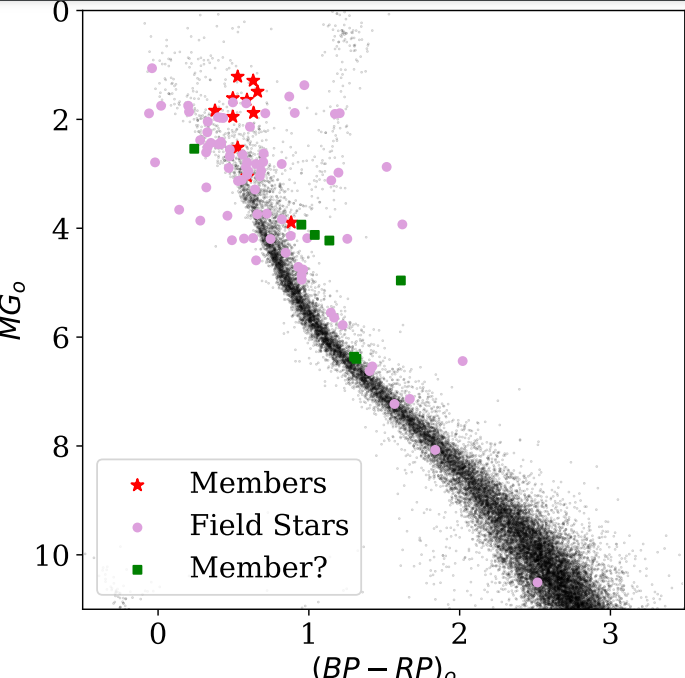Discovery of new short period variable stars in open clusters using OmegaWhite data
Variable stars are cosmic sources of light that change their brightness in time due to various physical phenomena like atmospheric pulsations and/or geometrical configurations like eclipses.
The OmegaWhite (OW) is a wide-field high-cadence synoptic survey that is searching the Galactic Plane and Bulge for intriguing rare variable stars like the interacting ultra-compact binary systems (also known as AM CVn stars). These are pairs of white dwarf stars that exchange mass. The key point of the survey is that it was designed to explore a new space of parameters: namely to search for faint, low-amplitude stars that exhibit short sinusoidal modulations in their light curves, with periods shorter than 20 min. These are the rarest types of AM CVn stars and also the hardest to be detected by typical transient and spectroscopic surveys due to their observing properties (only 7 are known today).
OW started in 2011, and uses the OmegaCAM detector on the 2.5 m VLT Survey Telescope in Chile. A large number of intriguing variable stars was discovered and several have been followed-up. The most interesting examples like the progenitor of an AM CVn system, the second warm magnetic carbon white dwarf, etc. have been reported in several publications.
The latest study reports on the searching for variable stars with periods shorter than 1 hr in open clusters that happen to overlap the OW fields. Open Clusters (OCs) are gravitationally bound groups of tens to hundreds of stars that reside in the thin disk of our Milky Way. The novelty of this study is that no other open clusters survey has explored the faint stars in the space searched by the OW. The importance of this work is significant since a star that physically belongs to an OC has more known parameters (e.g. the same distance and age as the cluster) and can be used to test stellar physics theories. OCs population studies can also be used to trace the structure and evolution of our Galaxy.
A number of 92 variable stars were found into a set of 20 OCs. Several stellar catalogues were used, including the newest derived from data released by the Gaia mission, to assess if our stars are cluster members. Of these, only 12 have the highest probability to be members, 6 more have unknown status and the remaining are field stars. From spectroscopic follow-up data and studies of the Gaia colour-magnitude diagram, 12 members are low-amplitude delta Scuti pulsators - one of the most common class of variable stars, as expected. The shortest period star found is a 29.8 min delta Scuti with a chance of only 66 percent to belong to an OC. Most of the stars discovered are longer periodic variables. The Gaia Hertzsprung-Russell Diagram (Fig. 1) indicates that the new found cluster members (shown as red star symbols) are located on the main-sequence and beyond; the latter are evolved pulsators. Among the field stars (pink dots), there could also be main-sequence high-amplitude delta Scutis and eclipsing binaries. As reference, all the field stars within 50 pc from the Sun (smaller dark dots) are shown. It is assumed that these closer field stars are not affected by reddening. The report concludes that the new results are in agreement with the literature: there is a relative small number of delta Scuti stars that are members of OCs.
More information: The most recent project was presented in a new published paper in the Monthly Notices of the Royal Astronomical Society Journal: The OmegaWhite Survey for Short Period Variable Stars VI. Open Clusters, by Toma et al. https://doi.org/10.1093/mnras/stac802.
Published on: Apr 07, 2022
